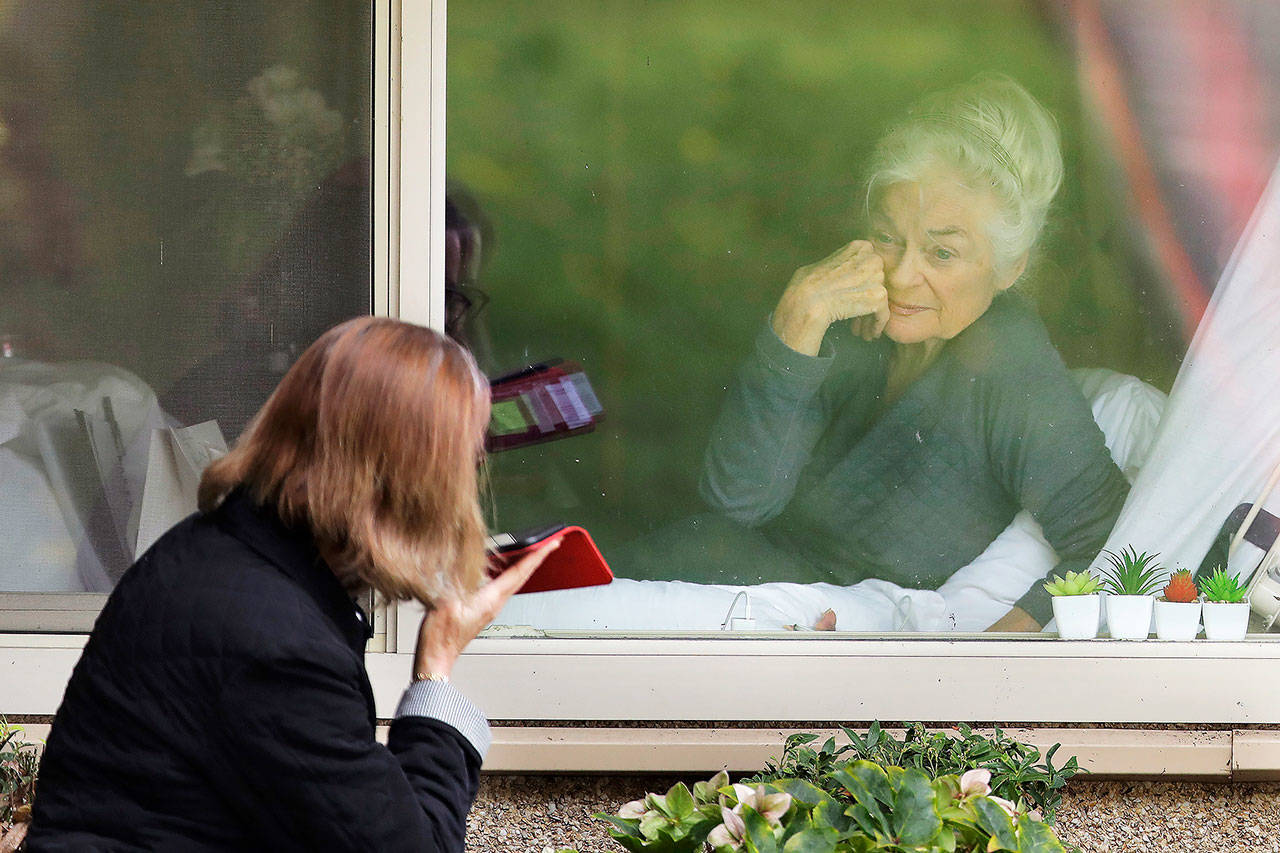By Carla K. Johnson and Mike Stobbe / Associated Press
SEATTLE — Staff members who worked while sick at multiple long-term care facilities contributed to the spread of COVID-19 among vulnerable elderly in the Seattle area, federal health officials said Wednesday.
At least 30 coronavirus deaths have been linked to Life Care Center in Kirkland. A report Wednesday from the U.S. Centers for Disease Control and Prevention provided the most detailed account to date of what drove the outbreak.
Public health authorities who surveyed long-term care facilities in the area found facilities didn’t have enough personal protective equipment or other items such as alcohol-based hand sanitizer.
They also said nursing homes in the area are vulnerable because staff members worked with symptoms, worked in more than one facility, and sometimes didn’t know about or follow recommendations about protecting their eyes or being careful while in close contact with ill patients.
Nursing home officials also were slow to think that symptoms might be caused by coronavirus, and faced problems from limited testing ability, according to the report.
Life Care officials did not immediately respond to a request for comment on the findings. Long into the outbreak, facility officials said they didn’t have enough tests for residents and that staff had gone untested.
Several family members and friends who visited Life Care before the outbreak told The Associated Press that they didn’t notice any unusual precautions, and none said they were asked about their health or if they had visited China or any other countries struck by the virus.
They said visitors came in as they always did, sometimes without signing in. Staffers had only recently begun wearing face masks. And organized events went on as planned, including a Feb. 26 Mardi Gras party, when residents and visitors packed into a common room, passed plates of sausage, rice and king cake, and sang as a band played “When the Saints Go Marching In.”
“We were all eating, drinking, singing and clapping to the music,” said Pat McCauley, who was there visiting a friend, told the AP. “In hindsight, it was a real germ-fest.”
About 57% of the patients at the nursing home were hospitalized after getting infected. Of those, more than 1 in 4 died. No staff members died.
“The findings in this report suggest that once COVID-19 has been introduced into a long-term care facility, it has the potential to result in high attack rates among residents, staff members, and visitors,” the report says. “In the context of rapidly escalating COVID-19 outbreaks in much of the United States, it is critical that long-term care facilities implement active measures to prevent introduction of COVID-19.”
Infected staff members included those working in physical therapy, occupational therapy and nursing and nursing assistants.
Researchers who have studied nursing home workers say the jobs are low paying, with many earning minimum wage. Many employees don’t get paid when they are out sick, they said.
“It is very common for them to work two jobs in order to make ends meet especially if they have a family,” said Charlene Harrington, of the University of California, San Francisco.
Harrington said her research shows that large for-profit nursing home chains such as Life Care have the lowest staffing levels of any ownership group.
David Grabowski, of the Harvard Medical School, said nursing home employees often leave for retail and restaurant jobs.
“We’re going to see a lot of outbreaks like the one we saw in Kirkland,” he said. “It’s the front lines for containing the virus.”
AP writer Bernard Condon in New York contributed.
Talk to us
> Give us your news tips.
> Send us a letter to the editor.
> More Herald contact information.


























